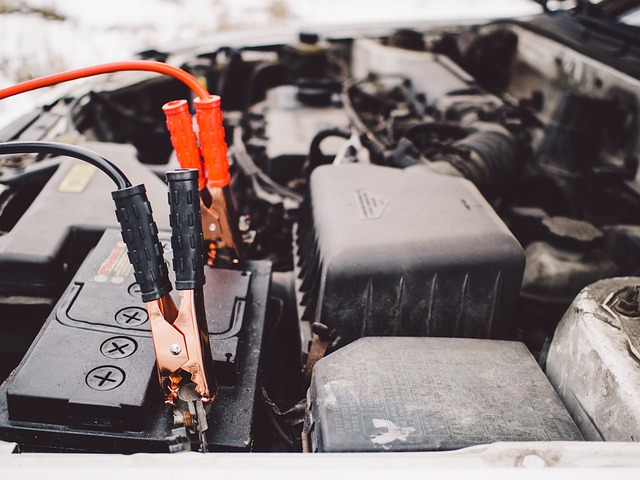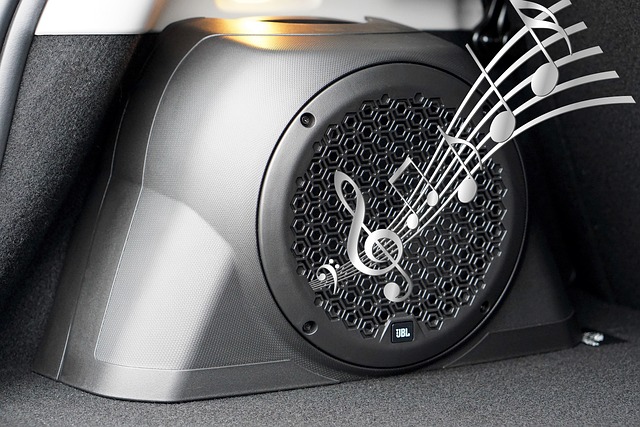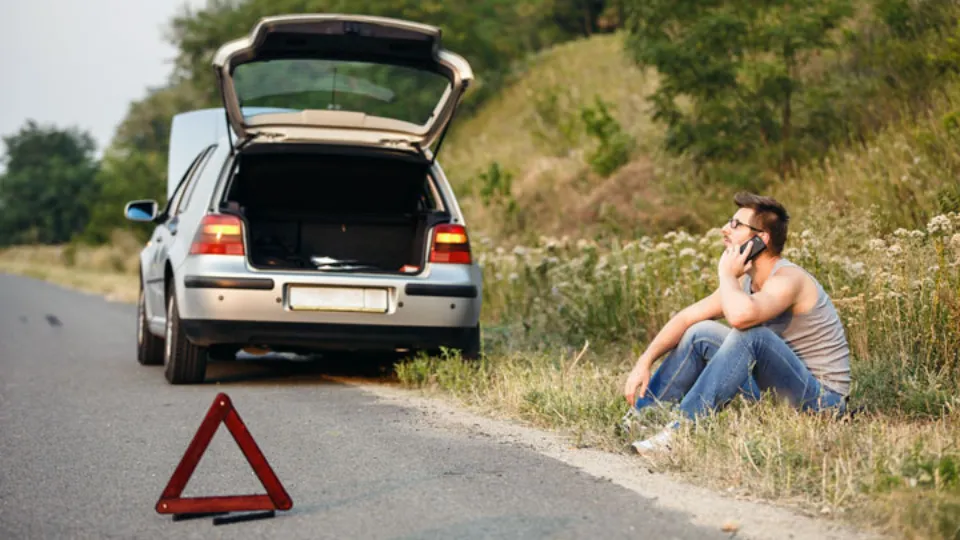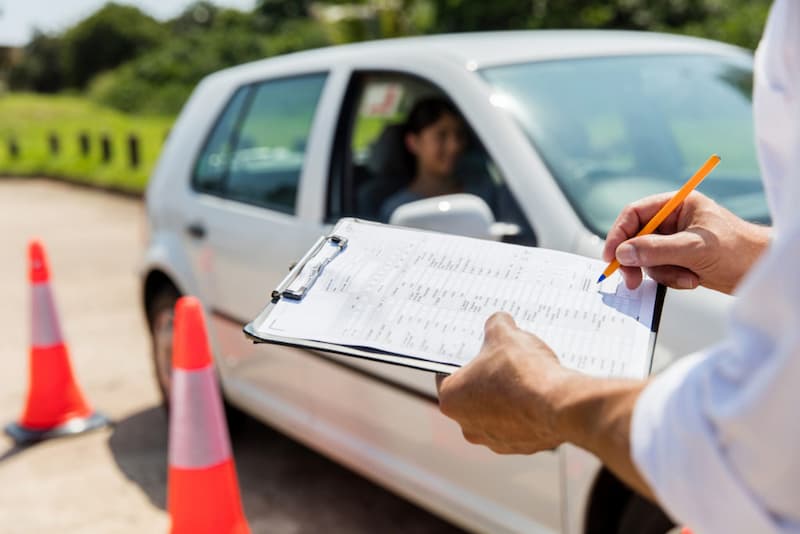To begin with, how long does a car battery last without driving?
Most car batteries require periodic starting in order to remain functional. Typically, a new and fully charged battery can last for around two to three weeks without needing to be recharged via a generator. This battery will eventually completely discharge in two to three months, at which point it will be difficult to start the car without a jump.
It isn’t a bad idea, if at all possible, to have someone check the battery in your car once every two weeks. To enable the alternator to recharge the battery, they would only need to turn on your car and let it run for 10 to 15 minutes.
If that doesn’t occur, you might need assistance starting your vehicle, and a roadside assistance membership can help with that.
Interested in learning how to prevent a dead battery in your car if you don’t drive it frequently? What should you do if you try to start your car but the battery is dead? Continue reading to learn how to maintain the battery in your car, as well as what not to do.
Table of Contents
Car Battery Lifespan
A battery’s lifespan is primarily influenced by how it is used and maintained. Your battery will not last as long if you use your car frequently as opposed to just occasionally.
A car battery has a four- to nine-year lifespan typically. Your battery can last much longer, though, if you take good care of it.
New Car Batteries
A brand-new, fully charged car battery can operate for about two weeks without needing to be recharged by a generator. After two to three months, this battery will be completely discharged. You won’t be able to start the car if you leave the battery disconnected for about 2.5 months.
The equipment that is running in a car when it is not moving affects how long a new car battery lasts. These gadgets include alarm systems, headlamps, and radio systems. This is so that they can use the vehicle battery, which is what they do even when the engine is off.
Older Car Batteries
Batteries lose some of their ability to hold a charge as they get older. A battery that is more seasoned won’t be able to go as long without being recharged. It can go from a week to a month without being charged, depending on the battery’s health.
When Battery is Disconnected
You are interested in finding out how long a disconnected car battery will last. When you keep using a lead-acid battery after it has been discharged, it will eventually die. The lifespan of your battery depends on how well you store it after disconnecting.
After removing your battery from the vehicle, it’s important to consider what temperature you keep it at. The battery tends to discharge much more quickly when placed at low temperatures as opposed to when placed at room temperature. Long-term storage of a discharged battery in low temperatures will cause it to fail.
This occurs because the electrolyte density inside the car battery significantly decreases. When stored at the ideal temperature, this will lead to crystallization and eventually damage the battery plates; the car battery stays usable for a longer period of time depending on its capacity. A car battery leaks 10mAh of natural current every second.
Battery Drain Causes
Modern cars have features that unknowingly drain their power. They’re referred to as parasitic drains. A car’s battery will only last less than four weeks if it has a lot of electronics and computers. This is because even when the car is not running, they will still be receiving power from the battery. Batteries continue to deplete their charge as long as the car is stationary. It is challenging to predict how long a battery will last. The battery’s age and the climate will both be factors.
BMW recommends letting a car battery sit for four weeks before removing it. It can remain after the battery is taken out for six weeks to six months. But over time, the battery needs to be continually recharged. When the battery is disconnected, it should ideally be recharged once every 12 weeks.

Prolong the Lifespan of Your Car Battery
You can extend the life of your vehicle’s battery in a number of ways.
- Regularly check the water level and add distilled water as needed.
- Short trips should be avoided as they don’t give the battery time to fully recharge.
- Never allow the battery to discharge below 20%.
- Prevent corrosion by keeping the terminals clean.
- Look for any damage to the clamps and cables.
- Park in a dry, cool area.
- Avoid keeping the battery in a discharged state.
A Bad Car Battery Symptoms
It is best to identify a faulty battery as soon as possible to prevent further damage from occurring. Here are some of the signs you might look out for:
- Starting the engine is either difficult or impossible.
- The check engine indicator is on.
- The headlights are dim or flickering.
- Windows with power are sluggish or broken.
- The stereo system begins to fade in and out.
It’s a good idea to have the battery in your car checked by a mechanic if you experience any of these symptoms.
What Should I Do If My Battery is Flat?
It’s likely that if you’ve been driving for a while, you’ve had to jump start your vehicle at least once.
This quick-fix technique, also referred to as a “boost,” starts a car with a dead or discharged battery by using jump leads to connect to the battery of another car or an external power source.
If you need to move quickly while driving and are out and about, jump starts may occasionally be required. But using a special battery charger/maintainer and regularly checking your car’s wattage in between charges is a better option for long-term battery maintenance.
If you ever get to your car and the battery is dead, it’s crucial that you know how to jump-start it. Knowing how to recharge your battery is also crucial.
Here is a quick tutorial on how to jump-start and charge your car’s battery.
How to Jump-start Your Car?
When you jump-start a car, you use outside electricity to give a flat battery enough power to start the engine.
Jump leads, which cost around £10 from Halfords, are necessary for the most popular method of jump-starting a vehicle.
Here’s a simple process to jump-start your car safely:
- Position the vehicle with the functioning battery close to the vehicle with the flat battery so that the jump leads can reach the batteries of both vehicles. Take care to clear any loose clothing and jewelry that could cause it to short-circuit and generate an unpleasant zap by moving any metal objects out of the way.
- Make sure the engine of the working car is turned off before connecting the red jump lead’s crocodile clip to its positive (+) terminal and the other end to the positive (+) terminal of the dead battery in the other car to complete the connection.
- Connect the second lead by fastening the crocodile clip of the black jump lead to the negative (-) terminal of the battery of the operating vehicle and then fastening the other end to an earthing point (a metal point on the engine block or chassis) far from the flat battery and fuel system.
- Start the working car’s engine after waiting a few minutes, and let it run for a minute.
- After that, turn on the engine of the vehicle with the dead battery and let both vehicles run for ten minutes.
- Turn off the engines in both vehicles, then disconnect the jump leads by removing the black lead from the vehicle with the flat battery first, followed by the red lead from the vehicle with a charged battery.) Make sure the leads don’t touch each other while you’re working.
- If your car won’t start after trying to restart it, there may be a more serious issue that requires you to call the AA or your breakdown recovery provider.
When the car stalls, it is never fun, and there are many potential causes, from improper clutch release in a manual car to a bad fuel pump. But, what causes a car to stall while driving.
Steps to Charging Your Car
Following these six steps will allow you to safely recharge your car and get it back on the road once you’ve chosen the best charger for your vehicle.
- Test the battery’s voltage by setting a multimeter or voltmeter to read DC voltage (depicted by a solid line and a broken line above or to the side of the letter V). You can measure between 0 and 20 volts after turning the dial to 20.
- In order to get an accurate reading, connect the red cable to the battery’s positive (+) terminal and the black cable to its negative (-) terminal while making sure that the engine is off.
- Take a reading; for a fully charged battery, it should not fall below 12.6V. 12.2V is generally considered around 50% charged and anything below 12V means it’s discharged.
- Make sure the contact points, or “terminals,” on top of the battery aren’t corroded or dirty before starting the charging process. If they are, clean them with some sandpaper while wearing gloves to prevent any of it from touching your skin.
- Take the negative (black) and positive (red) leads out of your battery, then move them both to one side to complete the disconnect. You may want to have the security codes on hand in order to reset your dashboard, any seat memory settings, and your radio after disconnecting your battery.
- Connect the charger; use the length of the cables to keep the charger as far away from the battery as possible; then, before plugging the charger into the mains, attach the clamps to the appropriate terminals (remember: positive to positive and negative to negative).
- Turn the charger on; consult the instruction manual of your choice to determine whether it will shut off automatically when the battery is fully charged or if you must manually disconnect it. To avoid overcharging and possibly harming the cells, a smart charger, for instance, will keep track of the battery’s health and adjust its charge cycle to match the demands of the vehicle.
- Make sure your car’s engine is still off before disconnecting your charger and connecting your battery, and then take the charger clamps off. Connect the positive lead (red) to the battery first, followed by the negative lead (black).
How Often Should I Start My Car If I’m Not Driving?
Regardless of how old the model is, you should start your car at least once per week and let it run for 15 minutes if you haven’t driven it in at least the last two weeks. This enables the alternator, or “dynamo” in older models, to recharge the battery and keep the engine in good working order.
Remember to turn off the lights (if you need to use them because it’s dark and your car doesn’t do this automatically) when you’re done; otherwise, you’ll discover that it’s completely flat when you go for a drive the following time. The lead-acid batteries in automobiles aren’t made to withstand this “deep discharge,” which is what it is called. In fact, if this occurs repeatedly, the battery’s life may be cut short by a third.
Maintain An Electric Car Battery After Not Driving
Like standard vehicles, electric and hybrid vehicles have 12V batteries (also referred to as “auxiliary batteries”), but they charge differently. In order to do this, the most typical method is to turn on the device by pressing the start button. This will automatically activate a charging system, which in turn increases the battery’s power.
You should start your EV at least once a week for 10 minutes at a time to give the auxiliary battery a sufficient recharge if you’re worried about how much charge it has.
Check the main onboard battery’s condition concurrently to see if it requires charging (you can do this through the dashboard in most electric cars). Lithium-ion batteries in EVs can gradually lose the ability to hold a charge over time, even when you may not be driving, and you might notice the effects in the form of a reduction in range or percentage.
If you need to charge your car, make sure you do so at a designated home charger or public station. Each EV has an EVSE (electric vehicle supply equipment) that includes a Type-2-to-3-pin cable for charging from a mains outlet, but this can overload the outlet and possibly be dangerous.
Keep Your Vehicle’s Battery Charged Even Not in Use
Driving your battery frequently is the simplest way to keep it safe. When not in use, it can also be charged through other activities. These are some examples:
Turn Off the Security System
If your car is parked somewhere secure, you can turn off the security system. The battery will discharge more quickly if you leave the security system on.
Remove the Negative Battery Cable
On top of the battery is where you’ll find the negative terminal. Battery drain can be reduced by turning off this wire. To carefully loosen the negative connection, counterclockwise turn the connection. The negative battery connection should now be free to be pulled off and set aside.
Remove the Battery Completely
It is preferable to completely remove the battery if your car will be parked for an extended period of time. Maintain a constant temperature of 40 to 60 degrees Fahrenheit in a dry, well-ventilated area where you store your batteries. Because the battery will naturally discharge more slowly after removal, you will need to charge it before replacing it.
Frequently Asked Questions
Does the Car Battery Die If Not Driven?
Yes, even when the car is idle, the battery will eventually die. This is a result of the natural self-discharge of automobile batteries. The battery is used for more than just propulsion. However, even when the car is idle, accessories in the vehicle have a tendency to drain the battery. The battery will self-discharge and eventually die if your car has a lot of accessories, like a radio, air conditioner, and clock.
Temperature is another factor that could kill a car battery when it is sitting still. Batteries in cars are destroyed by extremely low temperatures. This is as a result of the temperature causing little amperage to enter the motor. Extremely high temperatures have also been known to harm batteries.
What Can Drain a Car Battery When the Car is Off?
The vehicle contains a number of accessories that drain the battery when it is not in use. A parasitic drain is what this is. Radio systems, headlights, air conditioning systems, and alarm systems are the gadgets that drain car batteries. By disconnecting the battery from the car or turning the devices off, you can prevent the battery from being drained.
How to Know When My Car Needs a New Battery?
You’ll be able to tell that your car’s battery needs to be replaced by a number of symptoms. It must be replaced because the malfunctioning battery is the cause of the battery failing to start. Additionally, if the car’s engine keeps breaking down, there may be a problem with the battery or its terminals.
When the car accessories stop functioning properly, that is another indication. The vehicle’s battery supplies power to the radio, wipers, speakers, and lights. So, if they stop functioning normally, it means the car battery needs to be checked. The other indication is a rancid or rotten egg-like odor.
That smell is the evaporation of sulfuric acid. This is an indication that a cell is on the verge of dying. Finally, whenever you turn the ignition on, you will hear an annoying clicking sound. Try a jumpstart if this happens. The battery needs to be replaced if it malfunctions a second time.
How Many Years Do Car Batteries Last?
A car battery can typically last for two to five years. It can last up to six years, though, if you take good care of the battery. The battery will last a lot longer if you live somewhere with a cold climate. Additionally, the battery lasts significantly longer if the car is driven every day. For a longer lifespan, you should also keep the car battery fully charged. The car battery’s lifespan is reduced when the car is parked for an extended period of time without being used.
How Much Does It Cost to Replace a Car Battery?
Various factors affect how much it will cost to replace a battery. The cost will vary depending on the battery size, brand, location, and installation fees in your area. Car batteries typically come in sizes between 24 and 75. These batteries range in price from $40 to $90. Choosing a particular brand of car battery will affect the price as well.
The least expensive brand costs around $50. Labor costs vary depending on where you live and the type of garage you visit. Between $50 and $100 is the typical installation cost.
The Bottom Line
Battery life for cars should be at least four to five years based on typical driving distances and climate control usage. Recycling your dead battery will help you conserve the resources needed to make new batteries. If you notice that your battery is running low, swap it out for a fresh, high-quality battery so you can travel with assurance.
Thank you for reading.












